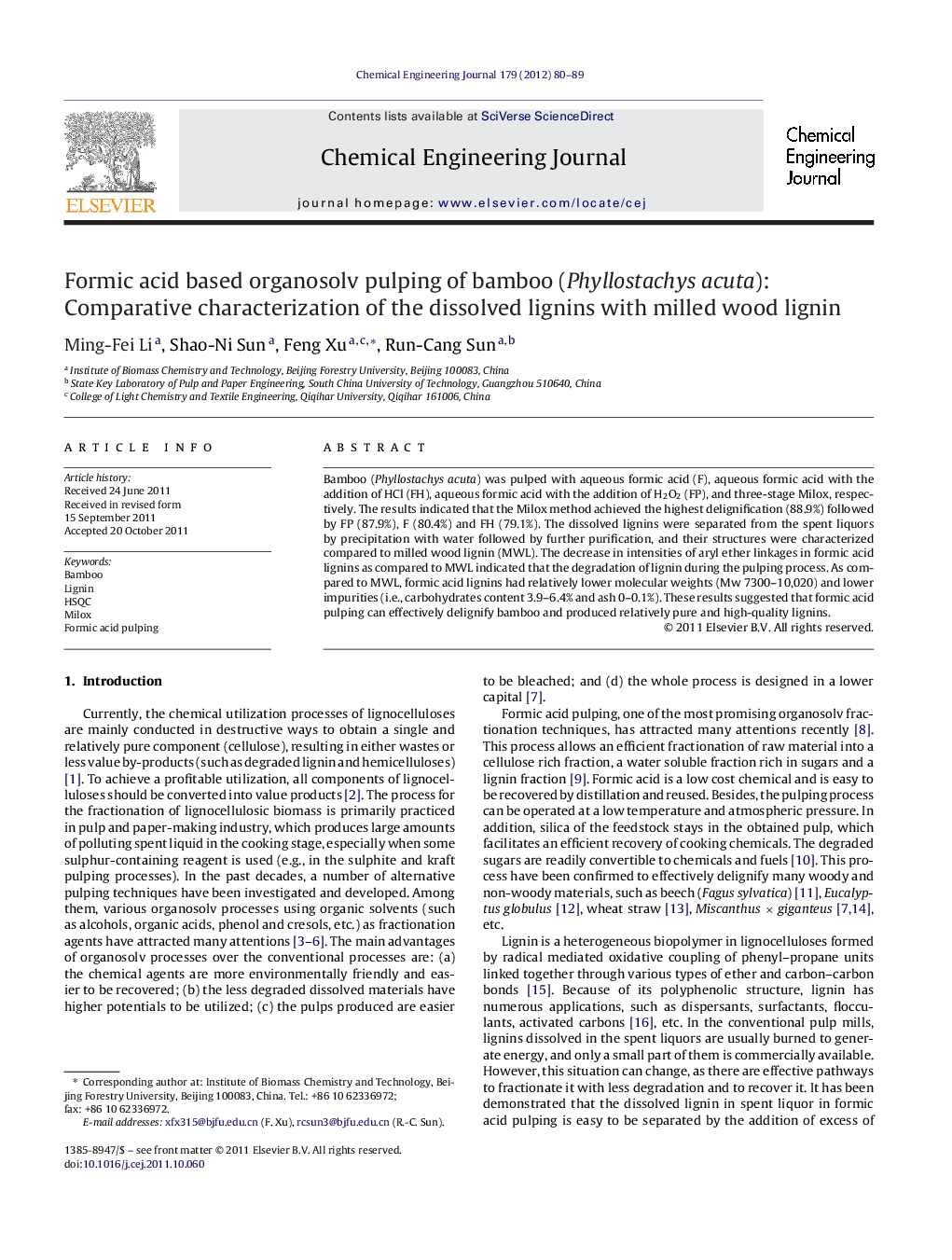| کد مقاله | کد نشریه | سال انتشار | مقاله انگلیسی | نسخه تمام متن |
|---|---|---|---|---|
| 150399 | 456449 | 2012 | 10 صفحه PDF | دانلود رایگان |

Bamboo (Phyllostachys acuta) was pulped with aqueous formic acid (F), aqueous formic acid with the addition of HCl (FH), aqueous formic acid with the addition of H2O2 (FP), and three-stage Milox, respectively. The results indicated that the Milox method achieved the highest delignification (88.9%) followed by FP (87.9%), F (80.4%) and FH (79.1%). The dissolved lignins were separated from the spent liquors by precipitation with water followed by further purification, and their structures were characterized compared to milled wood lignin (MWL). The decrease in intensities of aryl ether linkages in formic acid lignins as compared to MWL indicated that the degradation of lignin during the pulping process. As compared to MWL, formic acid lignins had relatively lower molecular weights (Mw 7300–10,020) and lower impurities (i.e., carbohydrates content 3.9–6.4% and ash 0–0.1%). These results suggested that formic acid pulping can effectively delignify bamboo and produced relatively pure and high-quality lignins.
Figure optionsDownload as PowerPoint slideHighlights
► Formic acid pulping allowed efficient fractionation of bamboo.
► Milox pulping achieved the highest delignification.
► Formic acid lignins showed lower intensities of ether linkages than MWL in HSQC spectra.
► Formic acid pulping processes produced relatively pure and high-quality lignins.
Journal: Chemical Engineering Journal - Volume 179, 1 January 2012, Pages 80–89